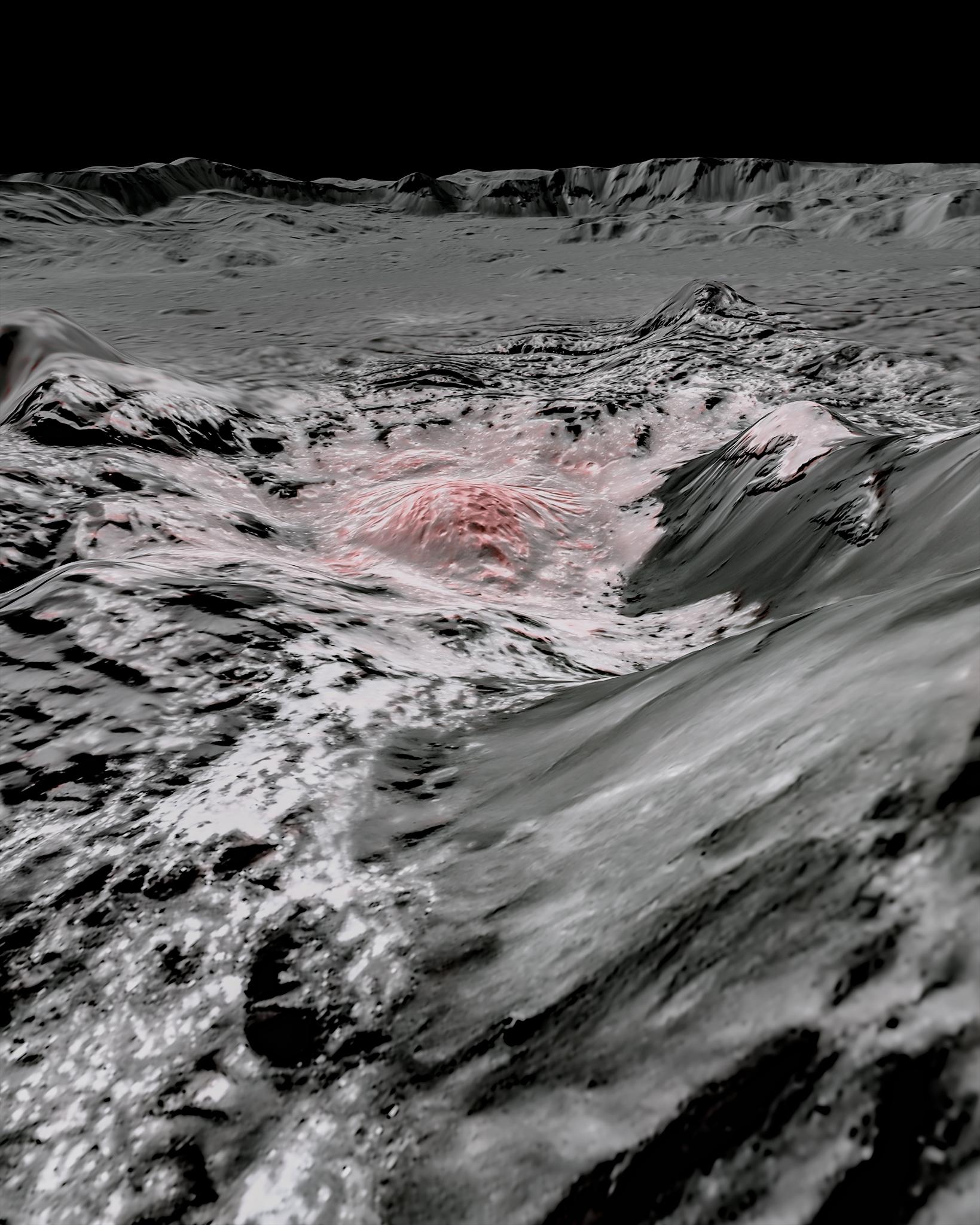The dwarf planet Ceres might be home to an underground ocean of water

Ceres, the largest asteroid in the solar system, seems to have liquid water seeping onto its surface, according to a new paper in Nature Astronomy. Data from NASA’s Dawn orbiter, the study suggests, show signs that it may be harboring an ocean deep underground.
The background: Ceres, a dwarf planet located in the asteroid belt between Mars and Jupiter, was studied intensely by the Dawn orbiter from March 2015 to November 2018. In its final weeks, the orbiter came as close as 22 miles from Ceres’s surface and collected a tremendous amount of data about the dwarf planet’s chemical composition. Dawn found many sodium chloride deposits on the surface, which scientists thought likely came from liquid that had seeped up onto the surface and evaporated, leaving behind a salty crust.
What’s new: But there still remained a question of exactly how that liquid got there. In a new analysis of the high-resolution images Dawn collected during those last weeks, Italian researchers found that the liquid comes from an underground reservoir of briny water, 25 miles below the surface of the Occator Crater, that could measure hundreds of miles wide. The salts found on the surface are important in helping to maintain liquid water within an environment like Ceres.
The findings are being published along with other papers looking into new insights into Ceres and the geology around its Occator Crater, which has a diameter of 57 miles (92 kilometers) and is roughly 20 million years old. Some of that research also teased the presence of water at the crater in other ways, like conical hills that are similar to icy mountains on Earth formed by pressurized groundwater, but the salt deposits offer the best evidence.
So what? The salt deposits are young—some just a couple of million years old. And the Dawn data shows that the dehydrated salts actually still have a bit of water in them. That suggests whatever geological activity is encouraging these deposits might still be happening, which would mean Ceres is still an active world.
Although salty water can be an extreme environment, the presence of an ocean suggests there might be more of these briny water reservoirs located elsewhere on the dwarf planet, raising hopes Ceres was once a habitable world—and might still be.
Deep Dive
Space
How to safely watch and photograph the total solar eclipse
The solar eclipse this Monday, April 8, will be visible to millions. Here’s how to make the most of your experience.
The great commercial takeover of low Earth orbit
Axiom Space and other companies are betting they can build private structures to replace the International Space Station.
How scientists are using quantum squeezing to push the limits of their sensors
Fuzziness may rule the quantum realm, but it can be manipulated to our advantage.
Stay connected
Get the latest updates from
MIT Technology Review
Discover special offers, top stories, upcoming events, and more.